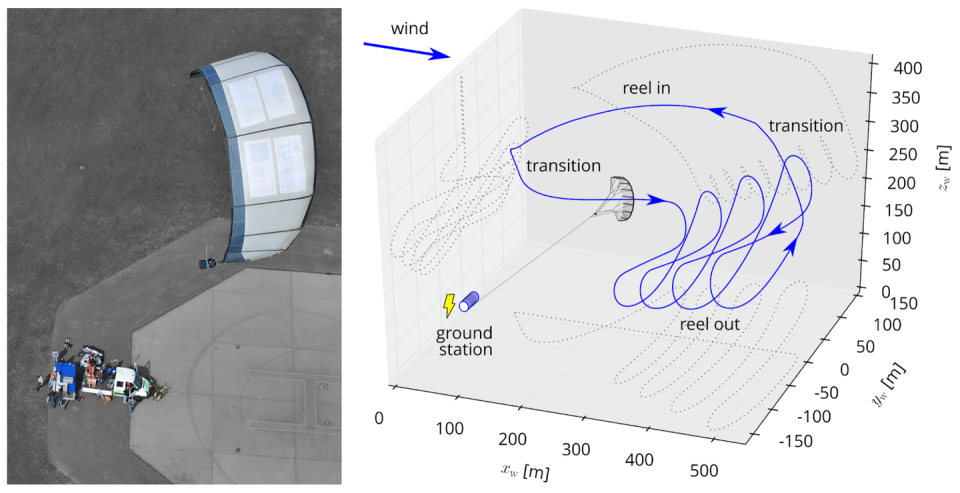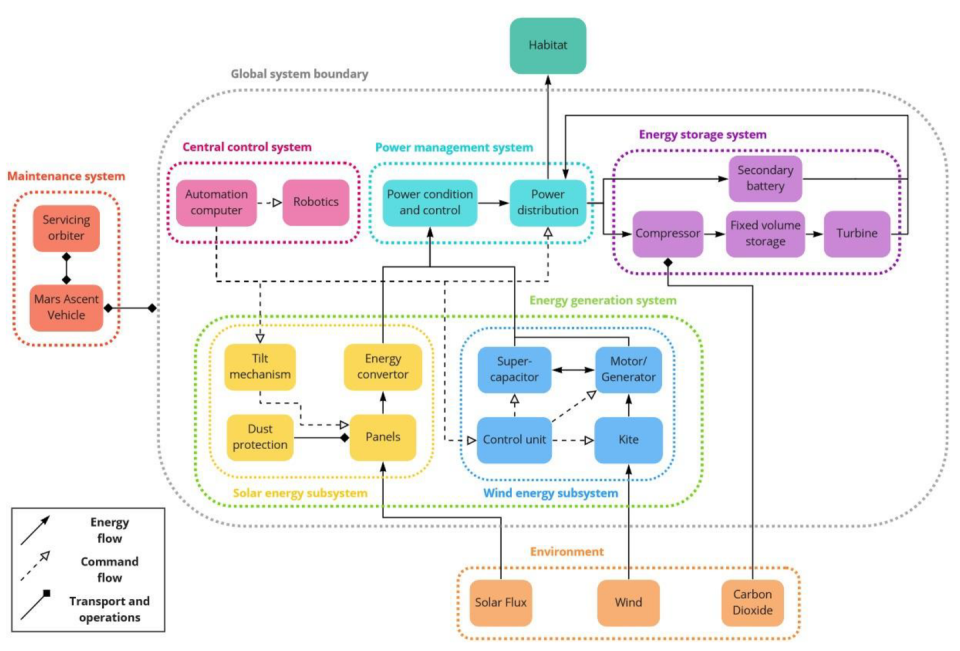Kite-Flying Robots Could Generate Energy on Mars
A wind and solar kite flown by robots could power Mars settlements.
Mars has low atmospheric pressure, but high wind speeds suitable for generating power.
The kite assembly saves as much weight as possible for the long trip to Mars.
The first settlers on Mars will need to rely on renewable energy to survive in the long run, or else Elon Musk’s prophecy will come true much sooner than expected. The problem? “Generating renewable energy on Mars is technologically challenging,” say scientists at Delft University of Technology.
That’s the understatement of the solar system. Mars receives just 43 percent of the sunlight that Earth does, the scientists explain, and our current generation of solar energy tech is lucky to reach about 40 percent efficiency to begin with.
➡ You think space is badass. So do we. Let’s nerd out over it together.
Nuclear energy, meanwhile, is often touted as the end-all for space exploration and settlement. But even if everything else were perfect, it’s just not possible—yet—to load spaceships with heavy, labor-intensive wind turbine sections, nuclear reactors, or solar panels. Everything must be maximally effective and as lightweight as is humanly possible.
So what’s an aspiring Mars resident to do? Go fly a kite.
Wind is one of the only ways Mars has an advantage over Earth, with higher wind speeds punctuated by powerful wind and dust storms that reach up to up to 5 miles high. So in a new paper published to the pre-print server arXiV, the Delft scientists reveal their ambitious plan for powering Mars: enlisting robots to wield gigantic electricity kites.

Mars has lower atmospheric pressure than Earth, which means less wind power at the surface. But “despite the low density of the Martian atmosphere, wind speeds are high enough to make wind energy competitive with nuclear power in terms of power produced per unit mass,” the scientists write in their paper.

The 50-square-meter kite is mounted as part of a control assembly robot on the ground, with a total weight for the entire project of just 640 pounds. That’s about the same as a midweight motorcycle, including everything the kite needs to continually change directions and flight paths. The system could generate approximately 127 megawatt-hours of energy per year, the scientists say—enough to power five households in the U.S.
More details:
“[T]he pumping kite power system is operated in alternating energy-generating reel-out and energy-consuming reel-in phases. When reeling out, the kite performs cross-wind maneuvers to maximize flight speed and pulling force. When reeling in, the kite is depowered, to minimize the pulling force and retraction time. The inflatable wing is actuated by a kite control unit (KCU). This suspended cable robot is responsible for steering the wing and changing its angle of attack, to modulate the pulling force.”
The kite assembly will also collect solar energy. The scientists say most solar panels for space are designed for use in the full sun of orbit, not the dusty dimness of Mars. So these panels will be multi-junction—meaning multiple materials to catch many different wavelengths—with a special experimental dust-repellent coating.
The panels will track the sun on two axes. The scientists even account for the panels’ trip to and from Mars, because the materials will need to be recycled on Earth.

Finally, the scientists calculate how much this will all cost, minus the variable cost of transport to Mars and back for any Earth-recyclable materials. They arrive at a total of just under 9 million euros, or about $11 million. That’s a lot of money, sure, but it’s only about a quarter of 1 percent of the inflation-adjusted cost of NASA’s Voyager 1 & 2.
In terms of spaceflight costs, the elaborate kite is basically the candy bar you toss in at the grocery checkout. And for the brave explorers building settlements on Mars, this thing could be the difference between feasibility and failure.
🎥 Now Watch This:
You Might Also Like

